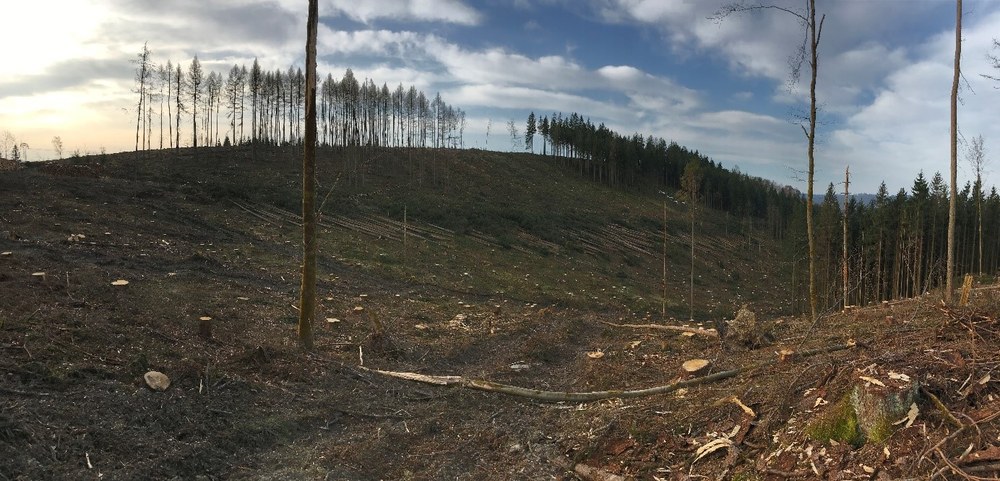Large-scale deforestation in Germany
Germany’s forests are in poor condition historically. Especially drought, storms and pests have given them a heavy blow during the past years. Researchers at EOC are analysing time series from Sentinel-2 and Landsat-8 satellites to document forest loss since 2018 in monthly intervals. The first results for selected regions show that deforestation activities have clearly accelerated since 2018 and continues in full swing.
In large parts of Germany, the years from 2018 to 2020 were characterized by recurring and sometimes prolonged periods of drought and hot spells. Temperature records were repeatedly broken. River reached alarmingly low water levels. Heavy rains could only partially compensate for the general water deficit, especially in western and north-eastern Germany. Snow hardly fell in the lower mountain ranges, so water reservoirs were not replenished as usual. The increased number of lengthy phases of drought, unusually long heat waves and scanty winter precipitation weakened the trees in Germany’s forests and led to favourable conditions for pests. In Germany the bark beetle probably presents the greatest danger. Conditions for the spread of this pest are often optimal in the pine forests, which are often planned as monocultures. The consequences for the forests are devastating: large areas die off; trees are removed to prevent yet greater economic loss. But not only pines are affected. The annual forest inventories compiled by the Federal Ministry of Food and Agriculture (BMEL) confirm for the four main tree varieties in Germany – pine, spruce, beech and oak – a clear increase in the percentage of the land area that is in poor condition. Precise quantification of the areas damaged is still pending. The so-far unknown extent of damaged or dead forest in Germany is in the meantime leading to large-scale clearance – in contrast to the otherwise usual practice of removing individual trees, or harvesting only small areas with timber.
The first results of the EOC analysis for selected regions show that clear-cutting has noticeably accelerated since 2018 and continues unabated. Areas particularly affected include the Frankenwald and the Thuringian schist mountains. Satellite-based assessment shows coniferous forest clearing since 2018 exceeding 1500 ha. and 2700 ha. in the upper Franconian counties of Kulmbach and Kronach, respectively. In the southern Thuringian county of Sonneberg the loss in forested areas was even over 4400 ha. Since the analysis that was carried out yields conservative estimates and so far records only completely cleared areas, it has to be assumed that the area with dead or seriously damaged trees is much larger.


